Description
- This portrait of a patrician family, seated around the table, is a rare and important piece within the art history of the early 17th century. It can be dated circa 1610, on the basis of its stylistic features and the presented objects. Only a few family portraits, with the family members gathered around a table, are known from the first quarter of the seventeenth century. This painting has been in the possession of a distinguished Dutch family for centuries.
The family portrait shows a wealthy family, who are seated at a lavishly set table. The husband and wife are seated at the most prominent places of the painting, according to traditional conventions. The father, as head of the family, confidently raises his berkemeier, a typical glass, which is mounted on a so –called bekerschroef. His wife is holding two cherries and a broken krakeling. Even though the children take in a central place in the painting, there is a hierarchy within the family. It was rather unusual for children to be seated at the table. They were expected to remain standing, as depicted here. Furthermore, from a hierarchical point of view, the boy was painted next to his father and the girl next to her mother.
The rich clothing, abundance of food and the precious objects that were placed on the table are means to impress the beholder. The exotic fruits, sweat meat, olives and salt were costly products, imported from distant countries. The silverware and delicate glasses are likely to have been part of the family estate. The silver salt cellar in this painting is very exceptional. It occurs in paintings by Osias Beert (1580-1624) and Clara Peeters (1594-1657), but has not been found in literature on antique silver yet. The clothing, with
fine lacework and gilt-thread embroidery conveys the message of wealth and abundance.
The painter managed to capture this special moment for posterity and this portrait was without doubt the show piece of the family.



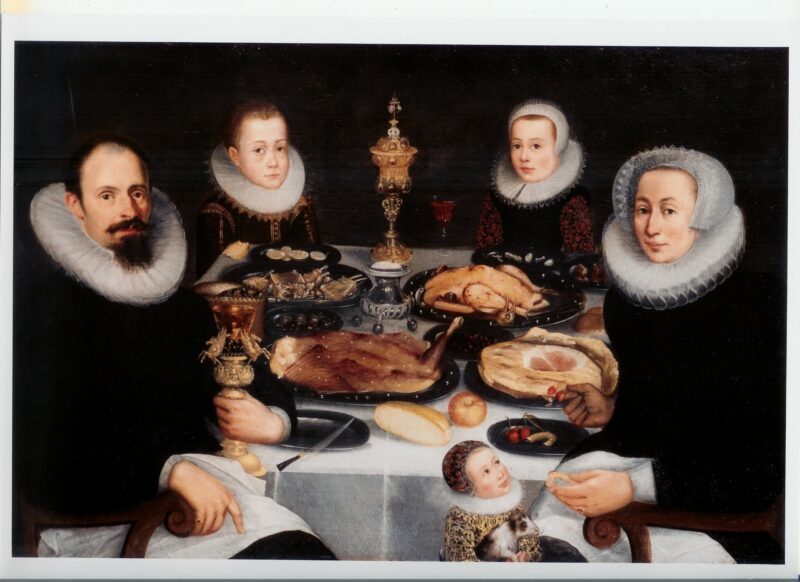
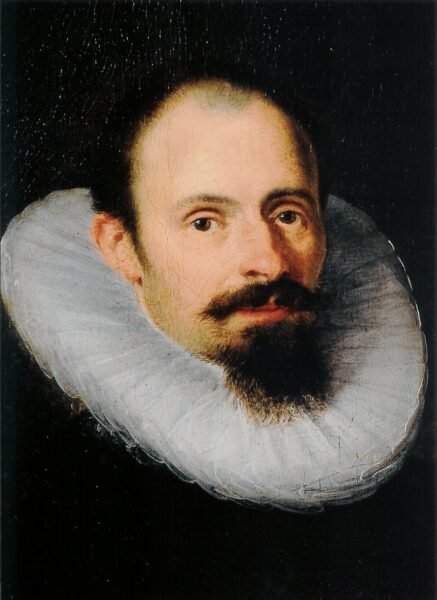
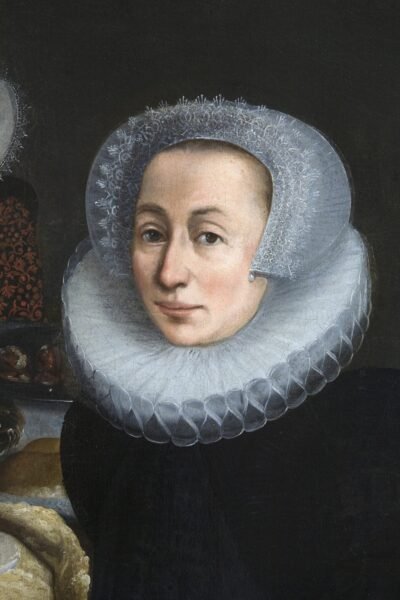
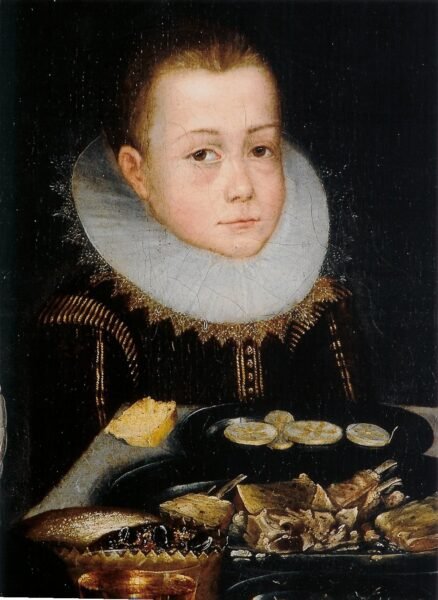
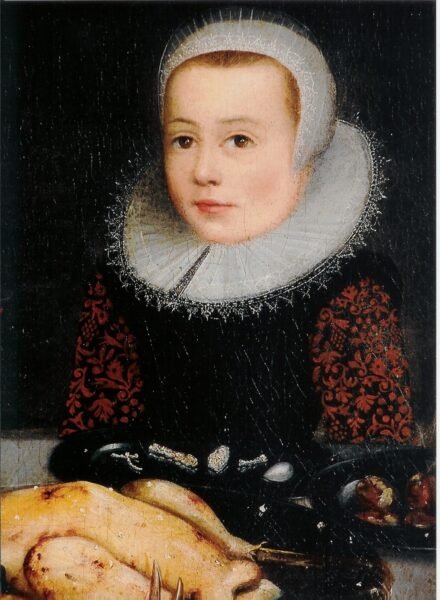
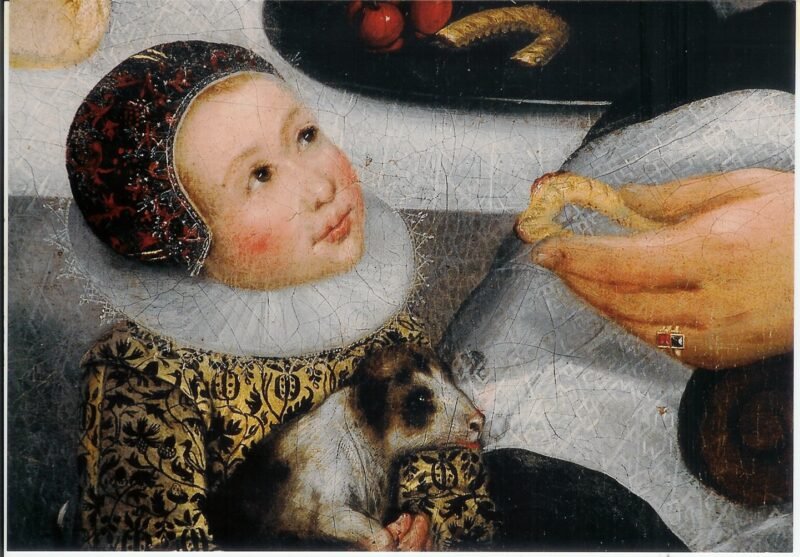




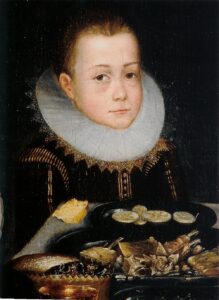
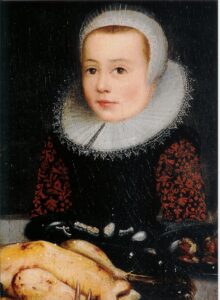
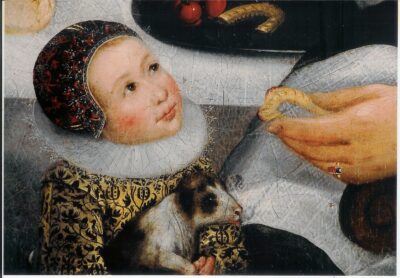
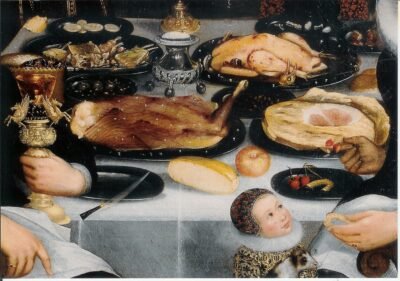
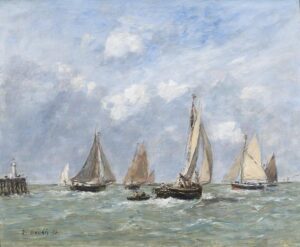



Reviews
There are no reviews yet.